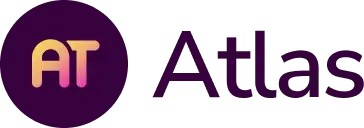Building Institutional Memory
With meeting templates, departmental resource pages, and personalized dashboards, the American International School in Kuwait (AISK) turned Atlas into a hub for all teachers’ needs—curricular and beyond. In this guide, walk through AISK’s documentation process for storing its collective memories and how this has a direct impact on the way school faculty engages with that informationIntroduction
When they began preparing for a reaccreditation review in 2013, AISK reflected on their then current school process by considering these questions:- To what extent is our teaching staff involved in our school-wide decision-making process?
- How does our documentation process affect the ways in which our staff engages with institutional memory? • How do we hold our team accountable for following through on meeting action items?
- How do we ensure that we repeat what works and adjust what doesn’t?
- Are we providing adequate knowledge transfers for new hires?
- How accessible are our school-wide documents, resources, and best practice reports?
Move Beyond Courses
Creating courses for different departmental and administrative groups will give Atlas users easy access to shared material. With a “course” built for each, schools can centralize material with “units” that house meetings minutes, shared resources, helpful curriculum examples, and more. AISK uses a creative method for organizing these “courses.” Take a look at the various school types, schools, and map types AISK uses to organize its administrative courses. One of these administrative templates is used for what AISK calls “Action Notes.” All AISK teams use a streamlined template to document what was presented at meetings, and how action will be taken to address each agenda item. With this streamlined documentation policy, translating meetings into action has become AISK common practice. [caption id="attachment_132725" align="alignnone" width="1024"] Action Note Template[/caption]
Action Note Template[/caption]
Invite People to the Conversation
When a school uses Atlas as a platform for school-wide strategic planning conversations, lowercase administrative teams have reason to expand Atlas usage to teaching assistants, business staff, and operational staff. By expanding the scope of Atlas, schools encourage new and old users to more frequently access the system in order to gain familiarity with its many benefits. At AISK, Atlas users can access meeting agendas, see which decisions were made, and view who is responsible for carrying out different tasks. With its Administrative Council Reports, AISK created a way for staff members to stay abreast of significant changes in the school. This sample report outlines the Administrative Council plans to amend a meeting process. Though the report is only editable by members of a core administrative team, it is viewable on Atlas by all members of the school faculty and staff. Through Atlas, AISK personnel can leave notes and engage in discussion about the plan. By giving voice to each member of its community, the AISK administration encourages communication within these groups to share ideas, best practices, and get their questions answered.
Rejuvenate and Streamline Your Units
Update your units to capture information that will be helpful for your school’s growth and curricular process moving forward. Examples might include revising the checkable options in checkbox categories to reflect new school goals and objectives or adding a new free text box to gain teacher reflections on academic units, departmental processes, or new policies. Encourage teachers to follow a “Style Guide” to ensure that the data going into Atlas is uniform across courses and units. Consider implementing a new method for titling units that share a component in common. For Meeting Minutes, AISK follows a numbering system to title each with the date on which it occurred. This Grade 8 Team Meeting course from AISK is a great example of uniform unit titling, and creative use of the curriculum map to document department meetings. Finally, take advantage of the Attachment capabilities of Atlas by attaching files from your computer, Google Drive, and links from the internet. Gone are the days when important resources could be found only by visiting various departmental offices and searching through file cabinets. When stored in one place, teachers will have no trouble accessing material from various individuals.
Through this AIS Tech Integration Resources course, any staff member with Atlas access can navigate to this page and take advantage of the many links and attachments related to technology integration in the classroom.
Finally, take advantage of the Attachment capabilities of Atlas by attaching files from your computer, Google Drive, and links from the internet. Gone are the days when important resources could be found only by visiting various departmental offices and searching through file cabinets. When stored in one place, teachers will have no trouble accessing material from various individuals.
Through this AIS Tech Integration Resources course, any staff member with Atlas access can navigate to this page and take advantage of the many links and attachments related to technology integration in the classroom.


